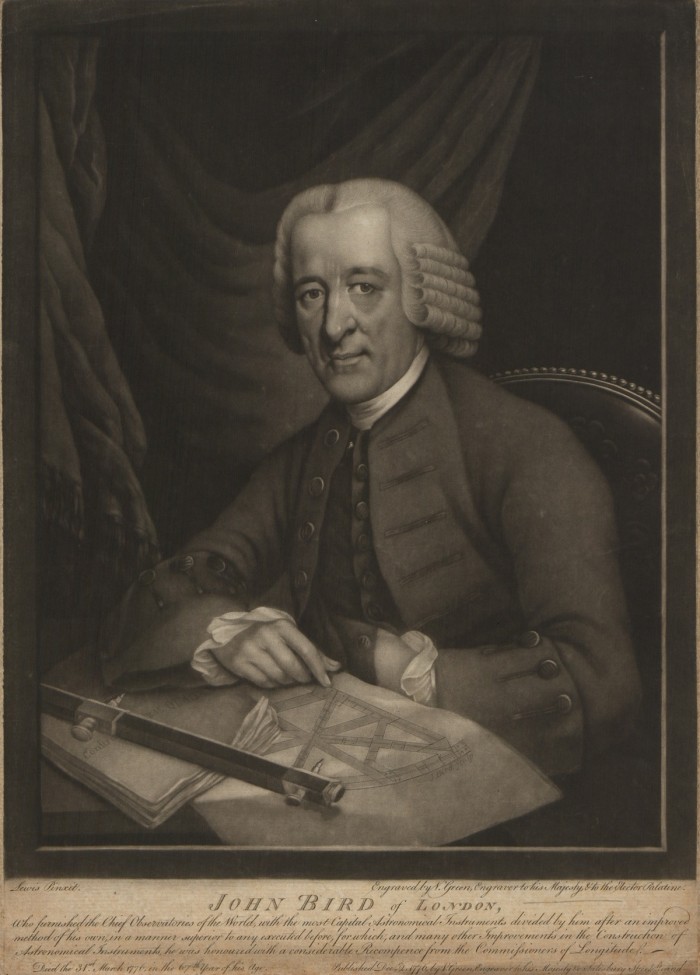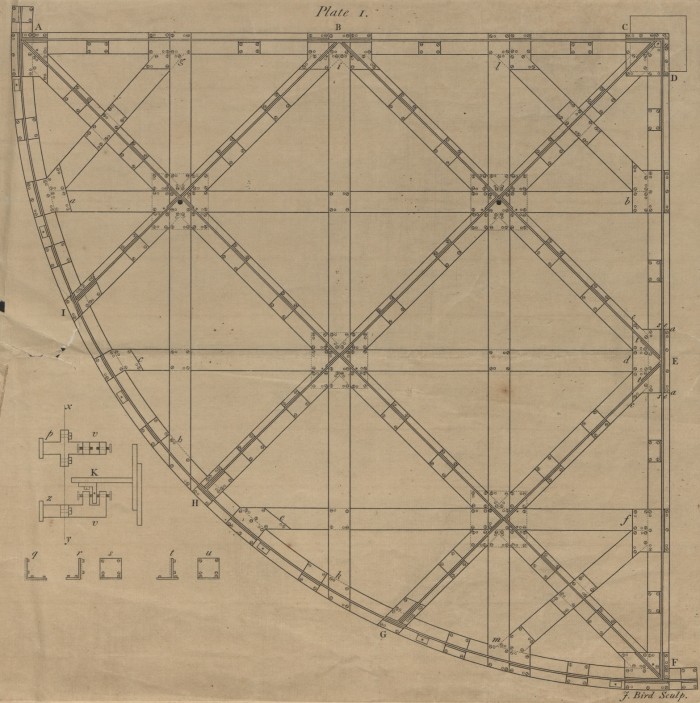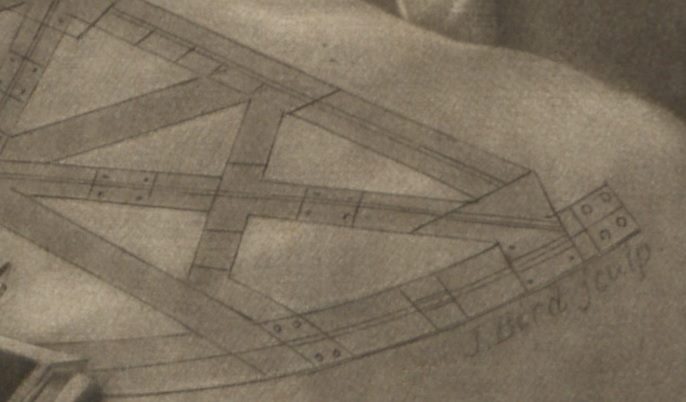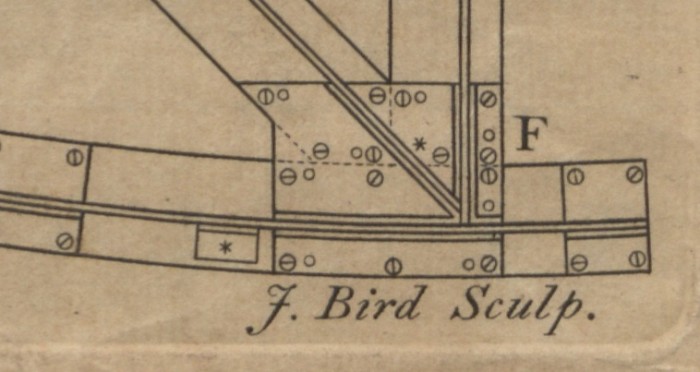Making Prints Public: John Bird – Connecting the Collections
Although our Making Prints Public project has been focused on cataloguing and researching the prints held in our collection, it has also highlighted the inter-connections between the prints and the object and library materials.
Scientific instrument maker John Bird (1709-1776) is a good example. Bird was particularly known for his large-scale astronomical instruments produced for observatories across Europe. His large mural quadrants (used to measure the altitude of celestial bodies) were constructed on new principles which greatly improved their accuracy. He was one of a series of outstanding mathematical instrument makers in eighteenth-century London whose new techniques of construction and high technical standards made the English instrument-making industry world-renowned.
The museum holds various items relating to Bird; prints, instruments and books. In the prints collection you can find a commemorative mezzotint by leading engraver Valentine Green. The mezzotint is particularly interesting viewed in the context of the collection as a whole as it illustrates all aspects of the museum’s relevant holdings; Bird seated alongside a table with a tool of his trade, a treatise on constructing quadrants, as well as a printed technical diagram of a quadrant.

Mezzotint of John Bird of London, by Valentine Green after Lewis, Published by Valentine Green, London, 1776. Inv 14176
The printed diagram within the mezzotint includes the detail text ‘J. Bird Sculp’, indicating Bird engraved the printing plate himself. It was not unusual for scientific instrument makers to also be involved in printing. The act of engraving a printing plate and, for example, engraving scale gradations on a quadrant were similar techniques and there existed greater freedom to work based on technical skill rather than specific knowledge. John Senex, a bookseller, printer and map and globe-maker, is another example, and the museum holds both globes and prints attributed to him.
The engraving and printing of his own technical diagrams is confirmed through our other prints relating to Bird. We have three technical diagrams of his famous mural quadrant, all bearing the lettering ‘J. Bird Sculp’.

Engraving, Bird’s Mural Quadrant, Engraved by John Bird, London, c1768. Inv 14477
Bird’s interest in ‘showing his workings’ is further revealed through his published works held in our library collection. These books were published thanks to funding from the Board of Longitude, which alongside its remit to solve the longitude problem, also aimed to encourage any relevant developments and benefit the instrument-making trade. In 1766 Bird proposed to the Board that for £500 he would instruct others in making astronomical instruments and write an account of his method, resulting in his 1767 Method of Dividing Astronomical Instruments and 1768 Method of constructing mural quadrants exemplified by a description of the brass mural quadrant in the Royal Observatory at Greenwich. Catalogue records of these works can be found here on the University’s SOLO search.
One of Bird’s famous large mural quadrants can be seen on display, mounted on a wall next to the main stairs in the museum. It was commissioned by Thomas Hornsby (the first Radcliffe Observer) in advance of the foundation of the Oxford Radcliffe Observatory in 1772. Hornsby stated to the Trustees that ‘there is unquestionably but one person living, who is capable of making them’.
Much of the original equipment for the Radcliffe Observatory, including other work by John Bird, was donated in the 1930s and provides a rare example of a near-complete outfit of an eighteenth-century observatory.

